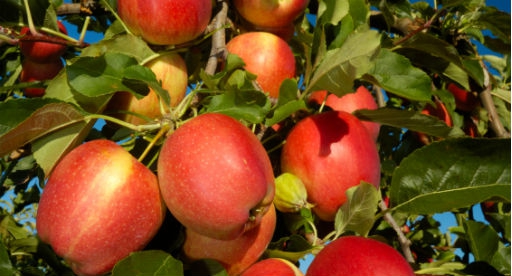
Whether you create your own mini-orchard, or choose to grow a few in pots on your balcony, fruit trees are fun to grow and can give many years reward of fresh, juicy homegrown fruit!
Many fruit trees are available year-round, but winter is when the widest variety will be available in store.
If you are growing citrus see our Tui Citrus Growing Guide, and for feijoas see our Tui Feijoa Growing Guide.
Choosing a variety
Choose an open, sunny position for your fruit tree. It is a good idea to find out how big the tree is going to grow to ensure it will have enough room.
Small dwarf varieties of many different fruits including apple, citrus, olive, guava and peaches are good options if you have a small space or are planting in pots and containers.
Depending on what you like to eat and what you want for your garden there are a wide range of common and heirloom varieties to choose from. You can also buy bagged or bare rooted trees. Before investing in a fruit tree do a bit of research into how long it is predicted to last, how resilient to pests and diseases it is, and what growing conditions it prefers, as this will affect how much maintenance it needs.
Prepare
Once you have selected your tree, it is time to get the soil prepared - the better the soil, the better your fruit trees will grow. If you are starting with an existing garden bed dig in organic matter like sheep pellets and compost to your soil. Then add a layer of Tui Citrus & Fruit Mix. If planting in pots or containers, plant in Tui Pot Power.
Plant
Check individual planting instructions on the tree label and follow the recommendations for amount of space it needs, and whether it should be staked.
Soak your fruit tree in a bucket of Tui Organic Seaweed Plant Tonic to help prevent transplant shock. Seasol is a seaweed based plant tonic that works absolute wonders in the garden, encouraging healthy growth, preventing transplant shock, and protecting plants against extremes in temperatures.
Planting fruit trees in the garden:
- Dig a hole approximately twice the depth and width of the root ball of your plant and partly fill with Tui Citrus & Fruit Mix.
- Gently loosen the root ball of your plant.
- Place the tree in the hole, and fill in with Tui Citrus & Fruit Mix, ensuring the tree is no deeper than it was in the container or bag. If your soil contains a lot of clay apply Gypsum as fruit trees don't like heavy soil.
Planting fruit trees in pots and containers:
- Partly fill with Tui Pot Power, and tap on the ground to settle the mix.
- Gently loosen the root ball of your plant.
- Place your tree in the pot, and fill in with Tui Pot Power, ensuring the tree is no deeper than it was in the container or bag.
In the first year after planting your fruit tree, it is best practice to remove any fruit that sets. This allows the tree to establish itself and encourages better fruiting in the following seasons.
Nourish
Replenishing nutrients used by your fruit trees ensures they will grow to their full potential, improving flowering and fruiting so they produce abundant and juicy crops. Use Tui Enrich Fruit, Citrus, Tree & Shrub fertiliser to feed your fruit trees planted in the garden or in pots and containers in spring and summer.
Don't forget to water your tree too - especially over the warm summer months to ensure you have juicy fruit.
Well watered, well nourished fruit trees will have a better chance of keeping insect pests and diseases at bay.
Protect
The weather, weeds, pest insects and diseases can all impact on the success of your fruit trees.
Protect your trees from the elements with layers of mulch. Add a layer of Tui Mulch & Feed about 50mm deep around fruit trees to suppress weeds and help conserve moisture. Be careful not to leave the mulch touching the trunk/stem of the plants as this can cause rot.
Tui Tip - Pruning
- Depending on the variety of fruit tree you have, they need to be pruned at different times of year, and not all trees need an annual prune.
- Be sure to remove all diseased, damaged or dead wood.
- Remove any branches that are crossing or rubbing.
- Cut away any branches that are growing back into the centre of the tree.
- Thin over crowded area of your tree’s canopy and shape according to its variety.
- See our Fruit Tree Pruning Guide for more information.
More Fruit Tree Guides
- Jan
- Feb
- Mar
- Apr
- May
- Jun
- Jul
- Aug
- Sep
- Oct
- Nov
- Dec
- Harvest in 1-3 Years